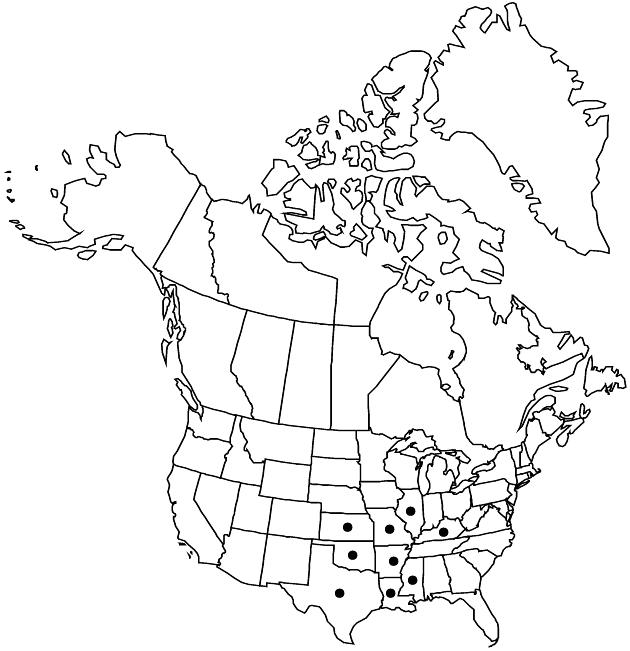familyAsteraceae
genusSymphyotrichum
subgenusSymphyotrichum subg. Virgulus
speciesSymphyotrichum patens
Symphyotrichum patens var. patentissimum
Phytologia 77: 288. 1995.
Basionym: Aster patentissimus Lindley ex de Candolle
Synonyms: Aster arnottii Nees ex Torrey & A. Gray Aster continuus Small Aster patens var. patentissimus (Lindley ex de Candolle) Torrey & A. Gray Aster subsessilis E. S. Burgess Virgulus patens var. patentissimus (Lindley ex de Candolle) Reveal & Keener
Treatment appears in FNA Volume 20. Treatment on page 489.
Revision as of 15:17, 18 September 2019 by FNA>Volume Importer
Plants robust. Involucres turbinate, 8–12 mm. Phyllaries in 5–7 series, appressed, obtuse, densely strigillose to canescent, eglandular or sparsely glandular; mid 1.2–1.7 mm wide. 2n = 20.
Phenology: Flowering late Aug–early Nov.
Habitat: Dry oak-hickory woodlands
Elevation: 0–1000+ m
Distribution

Ark., Ill., Kans., Ky., La., Miss., Mo., Okla., Tex.
Discussion
Variety patentissimum is found mostly west of the Mississippi River, in the Interior Uplands of the eastern United States. It is similar to the typical variety except for the involucre, which is usually 8–12 mm with more phyllaries in more series. Intermediates occur with var. patens.
Selected References
None.
Lower Taxa
None.